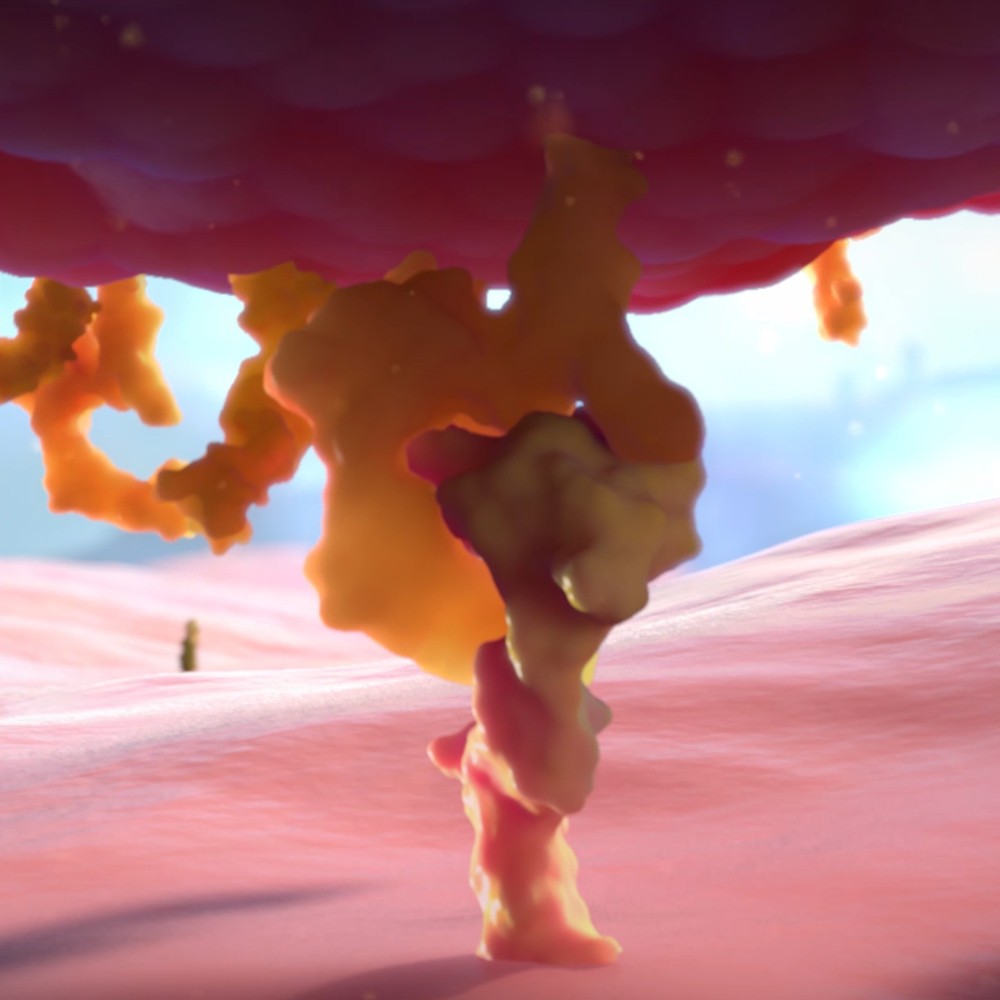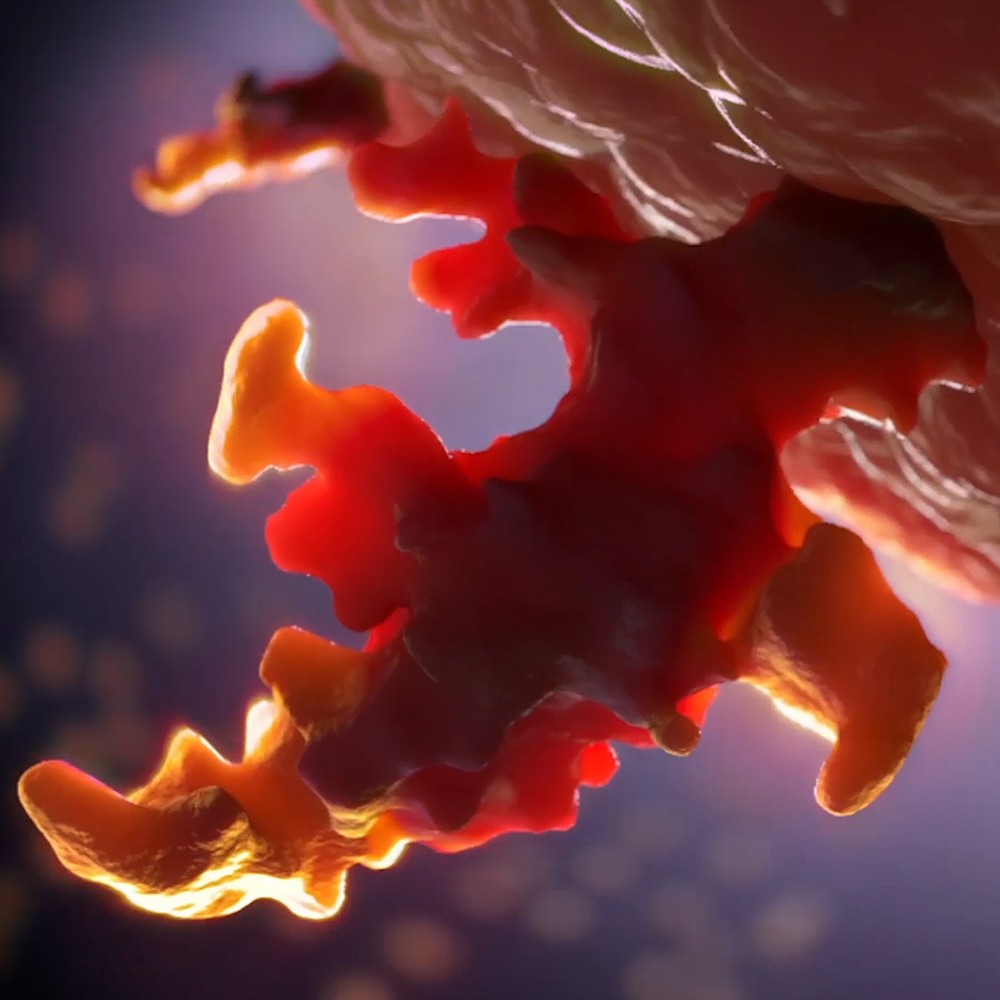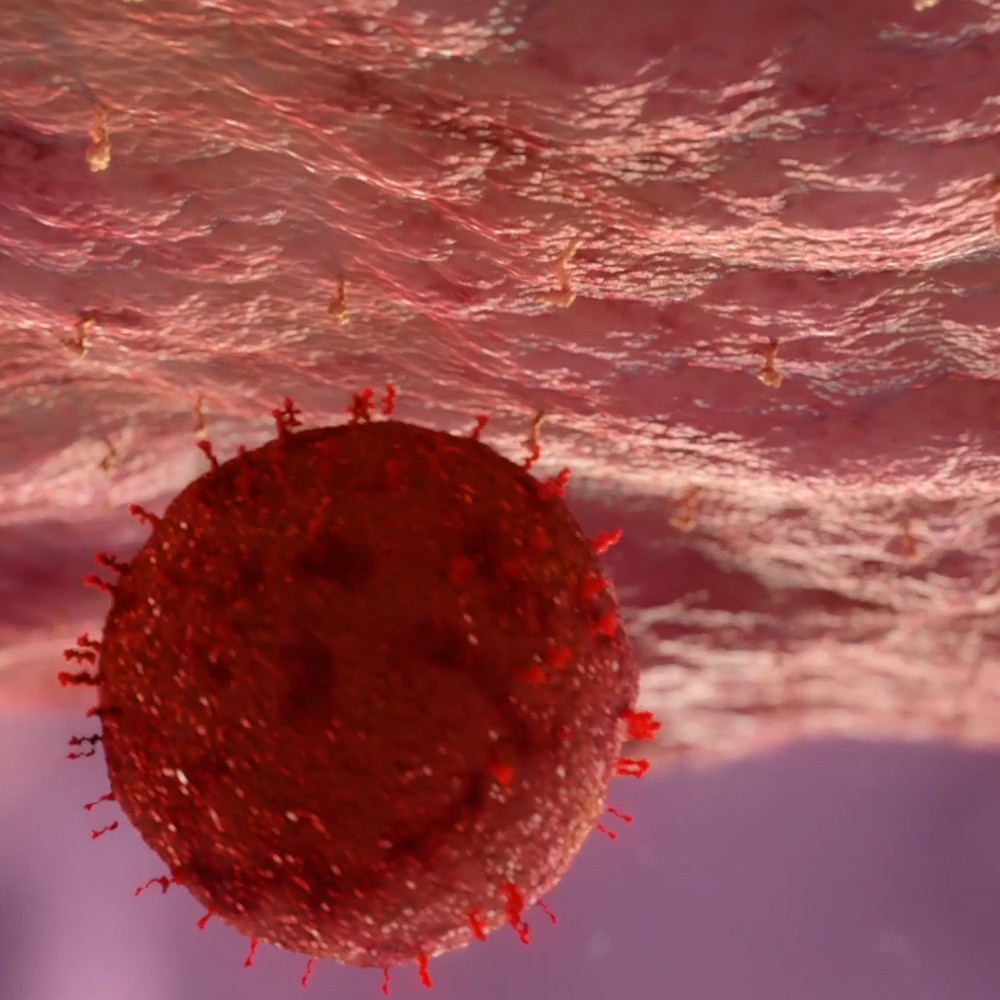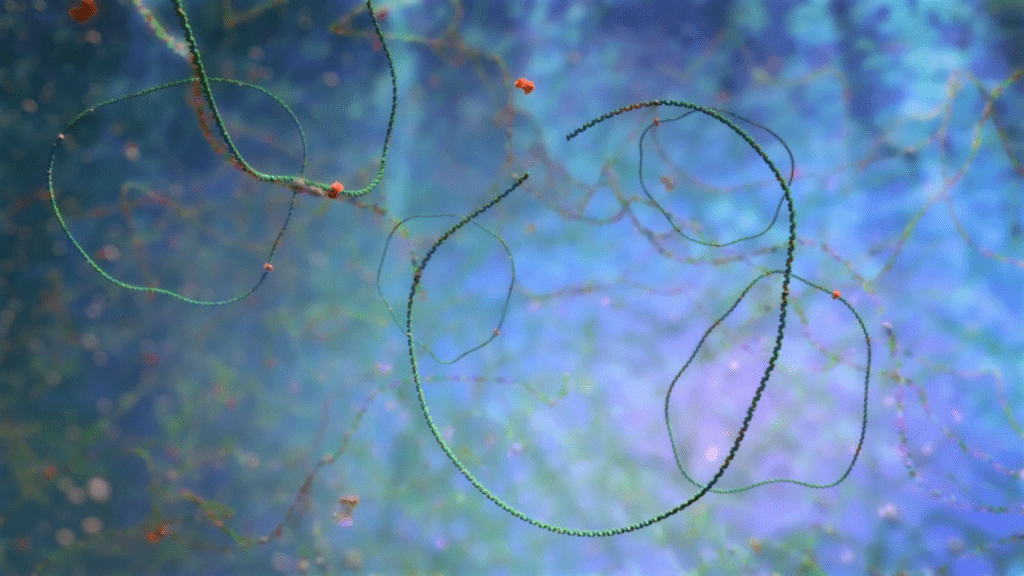
Researchers harness the manufacturing power of the world’s smallest factories, living cells (bacteria and yeast), to make vaccines. This animation seamlessly transitions from an electron micrograph of the bacteria E. coli, which is often used in genetic engineering, to an animated scene of the bacteria on a petri dish. Rings of DNA called plasmids contain the instructions in yeast and bacteria that direct when and how to make proteins. To make a vaccine, researchers can insert a particular DNA sequence into a plasmid in the right location to force the bacteria or yeast into making the corresponding protein.
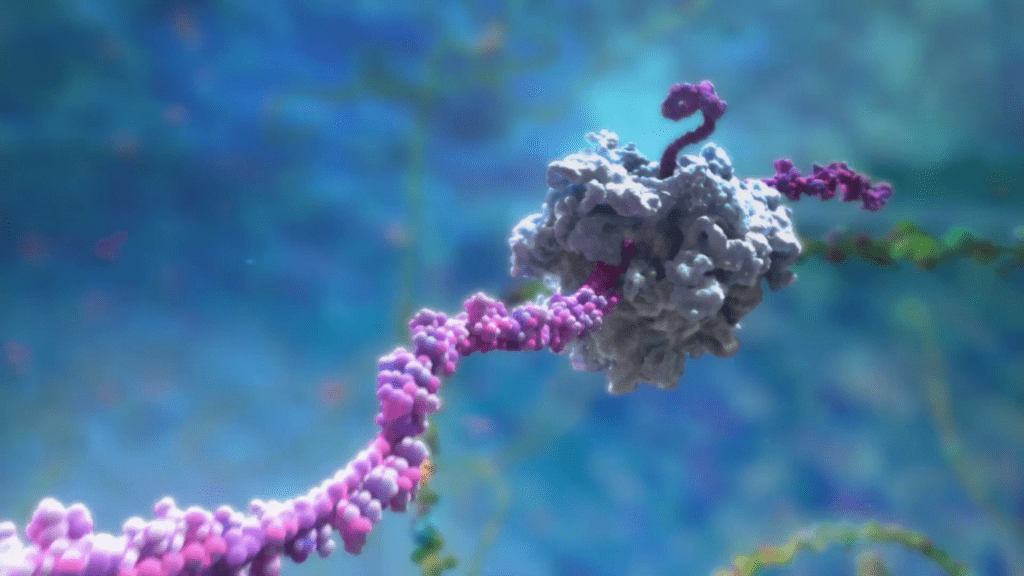
In the particular case shown in this animation, the plasmid is making the surface protein from the hepatitis B virus. Scientific detail is retained in the animation through the production of messenger RNA and translation by the ribosome to generate the structure of the hepatitis B surface protein. Learn more about these animations in our blog, HILLEMAN – A PERILOUS QUEST TO SAVE THE WORLD’S CHILDREN
Related Animations
